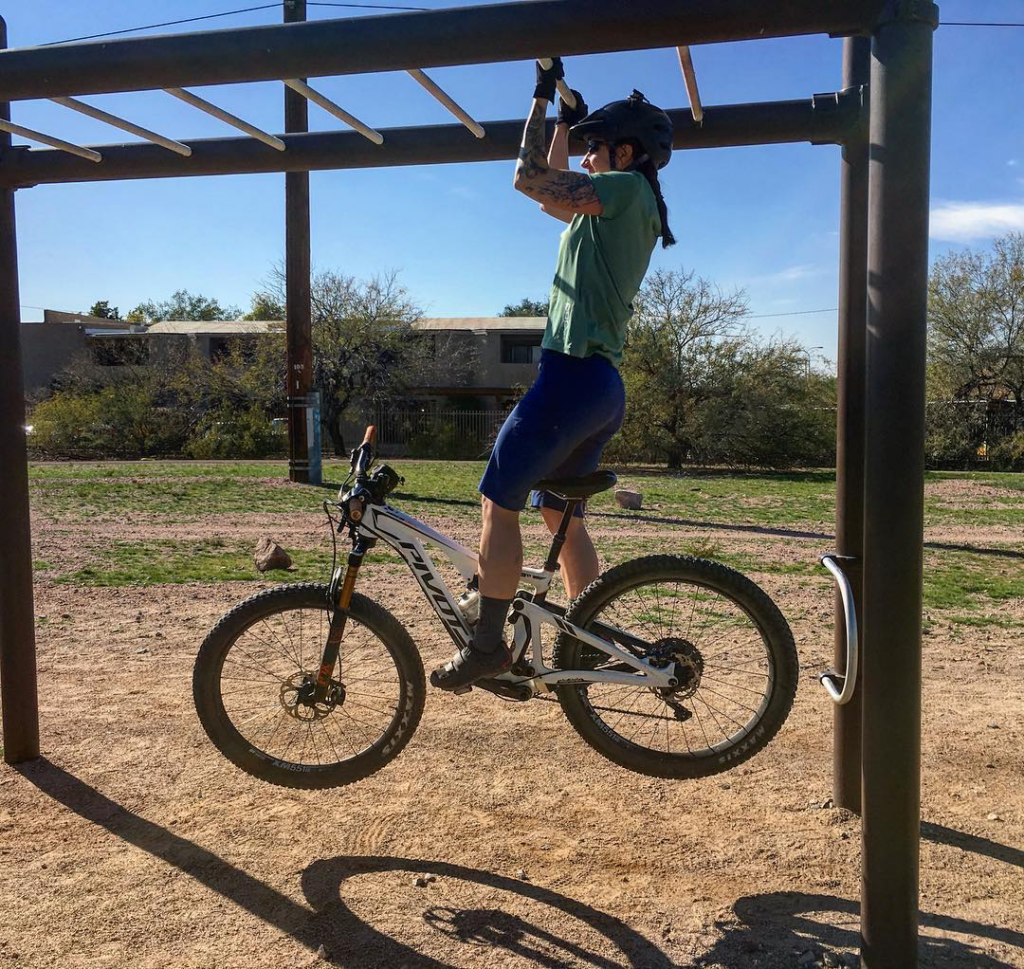“I hate running.” A phrase stated all too often in the cycling community. “It doesn’t feel good, and it’s hard to breathe. So why would I run if I can ride my bike just fine?” To quote a long-time friend and fellow mountain biker, “The only time you’ll see me running is if I am being chased by a bear.”

There are many principles in exercise physiology that support the following idea: the greater the focus on a particular sport, the better the body will become at it, cycling included. In the 1970’s, the research of Dr. Kenneth Cooper influenced scientists and fitness professionals to popularize the FITT Principle, which uses four complementary components to guide individuals in effective application of exercise. These components are:
- Frequency: How often exercise is performed.
- Intensity: The level of effort exerted during a workout. This can be measured using heart rate, perceived exertion, or measured using an amount (like weight lifted).
- Time: The duration of an exercise session. This varies based on the type of exercise. Interval training is shorter induration than endurance training.
- Type: The modality of exercise, like running, swimming, lifting, or yoga. The type aligns with fitness goals.
General Adaptation Syndrome (GAS) is a second principle that supports the notion that the body will adapt to the specificity of the demands emplaced on it. This means, if an individual chooses to tailor their training to a specific sport or goal, physiological adaptations will follow suit. It has three components:
- Reaction: Adaptation to Stress. Specificity of exercise will drive the body’s adaptation response. For example, strength training will signal muscle hypertrophy and improve neural efficiency, while endurance training will enhance cardiac output, oxygen delivery and utilization, increases in plasma volume and mitochondrial mass.
- Resistance: Progressive Overload. Improvements in adaptation (gains) are driven by progressively increasing the volume, intensity or complexity of exercise. Without increasing the stress or load, a plateau will occur due to the repeated exposure to the same stressor.
- Exhaustion: Stress Management and Overtraining. Too much volume or load can lead to fatigue or soreness, and potentially overreaching. If excessive stress continues, overtraining syndrome (OTS) could result. Adequate recovery and variety is key to managing load. This includes the components of sleep, nutrition, cross training, and mental health.
How does cross training fit in?
Cross training fits nicely into the principles described above. It is a versatile method that engages different types of exercise, like running, to improve overall fitness, strength and flexibility. It allows muscles and joints to adapt to different types of movement, improving balance and agility, reducing the risk of injury. Cross training can be effectively integrated into any training program, following the FITT principle well.
A variety of training can help prevent overuse injuries and decreases in motivation, allowing an athlete to perform some type of exercise every day. Discipline only goes so far if burnout occurs and enjoyment starts to wain. In addition, varying intensity helps balance muscle engagement and promotes recovery of different muscle groups while simultaneously pushing fitness thresholds. For example, high-intensity interval training (HIIT) or tempo work can be alternated with long, slow distance rides. Going hand-in-hand is varied duration, where HIIT workouts take less time than a long run or ride. Here, fatigue can be managed and performance can be optimized.

Integrating alternative exercises into a cycling program can optimize the level and type of stress placed on the body, following the basic components of GAS. It also mitigates the stress placed on more frequently engaged muscle groups, thereby reducing the risk of entering the exhaustion phase of GAS and potentially overtraining.
The varied physiological stimuli stemming from different modalities of exercise promotes adaptations across different physiological systems. For example, the aerobic benefits from running can further enhance the cardiovascular and muscular endurance capacity of primary muscles, and also engage muscles that support joints. It is also a weight-bearing exercise, which has benefits for bone mass maintenance. A plateau can also be avoided by changing the physiological stressor.

Cross training, whether it’s running or bouldering, adds diversification to training, enhances muscular endurance and strength, and helps balance overall muscular load. By managing training intensity, frequency, and type, a well-rounded fitness regimen results that will support healthy conditioning. It is an integral component to any well-defined training program and will take performance gains further than only cycling alone.
Still hate running? Check out this article on Singletracks.com, where we dive into the benefits that running brings to mountain biking.
References
- Bangsbo, J., & Iaia, F. M. (2013). “Physical performance in elite soccer players: physiological and performance demands.” Journal of Sports Sciences, 31(8), 875-887.
- Billat, V., et al. (2005). “Physical training and exercise in the prevention of coronary heart disease.” European Journal of Preventive Cardiology, 12(4), 317-324.
- Bishop, D. J., & Jones, E. (2013). “Recovery from training: a meta-analysis.” Sports Medicine, 43(2), 141-154.
- Girold, S., et al. (2006). “Effects of a short-term training program on the performance of 1,500 m runners.” Journal of Strength and Conditioning Research, 20(2), 398-404.
- Kraemer, W. J., & Ratamess, N. A. (2004). “Fundamentals of resistance training: Progression and exercise prescription.” Medicine and Science in Sports and Exercise, 36(4), 674-688.
- McAuley, E., & Rudolph, D. L. (1995). “Physical activity, aging, and psychological well-being.” Journal of Aging and Physical Activity, 3(1), 48-61.
- Mujika, I., & Padilla, S. (2000). “Muscle and strength performance during the tapering period in swimmers.” International Journal of Sports Medicine, 21(6), 411-418.
- Patterson, P., & Hurley, M. (2010). “The Effect of Cross-Training on Aerobic and Anaerobic Capacity.” International Journal of Sports Medicine, 31(8), 572-577.
- Rhea, M. R., et al. (2003). “A comparison of linear and nonlinear periodized programs with equated volume and intensity for untrained men.” Journal of Strength and Conditioning Research, 17(1), 82-87.
- Selye, H. (1956). “The Stress of Life.” New York: McGraw-Hill.